Innovations in Visual Language
Sutton Glyphs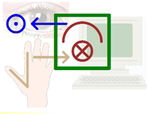
Military Chat?
Some Military Glyphs
Air Traffic Control Glyphs
Bunker and Targeting Glyphs
Where no Pen has gone, Before
Hybrid Visual Language System
Proposed Bliss Software
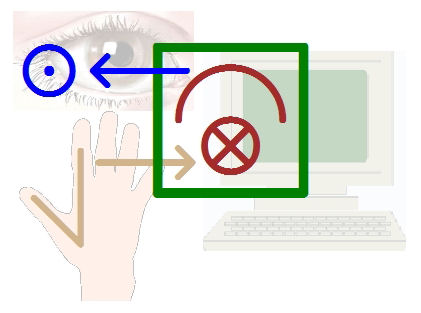 |
The Visual Age We are in the visual language age according to Alan Stillman of Kwikpoint.com. Speaking at VaIL 2007, Mr. Stillman explained that human communication evolves through three phases, or ages: |
| The visual age is here alright, but it will be driven by the usual inputs from our hands and mouths. Simplify for a moment. All information transmits out of either our mouths as speech, or out of our hands as sign language, texting, or drawing. When we wish to stop transmitting, we put our hands on our mouths, tying up both of the exits of information. Even morse code is sent by hand. And even Tom Cruise in Minority Report moves vast amounts of information around on a virtual screen by wearing data gloves on his hands.
And just as there are two parts of us that transmit, there are two parts that receive, eye and ear. This is not likely to change, ever. While mechanical, even nanotech sensors may send telemetry and data directly to computer hard drives, there would be little benefit in trying to send it directly to the human hard drive, the brain. The pathways nature gave us for receiving information actually transform it for us, making it useful. They don't just pipe it in. |
 |
We are not likely to do better than nature in this regard until we actually create androids like Data on Star Trek. Way, way off in the future. So we can spend billions of dollars in researching new ways to represent knowledge, and much may be gained, but in the end it all comes down to drawing shapes and colors in a little square to make an icon. And the issues won't change one iota: Which shapes and which colors?
Blissymbolics has led me to an axiom which has yet to fail:
There are no difficult concepts, only difficult explanations of simple concepts.
Language is metaphorical by nature. The behaviors of billiard balls inform us about atoms, until we find a better metaphor for atoms or can actually see them. Even then, the same kinds of things happen at that level as happen at the macroscopic level. The flows of streams and rivers inform us about the flows in capillaries until we are able to actually see capillaries in a microscope. Even then, a flow is a flow, whether microscopic or macroscopic:
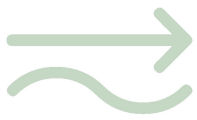 |
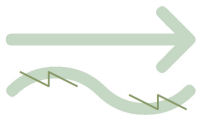 |
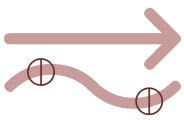 |
 |
The concept of containers passing through a pipe could be blood cells carrying hemoglobin through a capillary or trucks carrying freight through a tunnel. Modifiers can be added to distinguish between a cell and a truck, or context may sometimes be sufficient to distinguish different applications of the same concept. |
About
Contact
Symbols in The News
Interpret this Symbol
AAC
African
AI
Alchemy
Alphabets
Ancient
Animal Symbolism
Architecture
Art
Articles
Astrology
Baha'i
Blissymbolics
Blueprint Symbols
Buddhist
Celtic Symbols
Cemetery
Chinese Symbols
Christian
Circle
City
Codes
Color
Conlangs
Crop Circles
Danger
Da Vinci Code
Designing Logos
Dictionaries
Dreams
Education
Egyptian Symbols
Electrical
Emoticons
Find Images
Fonts
Food
Fraternity
Hamsa
Healing
Heraldry
Hermetic
Highway Signs
Hindu
History
Hobo
Holiday
Icons
iConji
Islamic
Jain Symbols
Japanese, Kanji
Jewish
Justice
Law
Literary Symbolism
Mandalas
Map
Masonic
Math, Number
Meaning of Names
Medical
Middle East
Military
Miscellaneous
Money
Music
Mythology
Native American
Playing Cards
Power
Psychology
QiQiiKhu
Reiki
Religious
Runes, Norse
Sacred Geometry
Scientific
Science Fiction
Sorority
Sports
Symbols in the News
Tattoos
ThirteenSymbols
Tree of Life
Ursprache
Videos
Visual Languages
Weather
Web Codes
Wicca
Words
Writing Systems
Braille
Coinherence
Coptic
Cuneiform
Easter Island
Etruscan
Happy Human
Hebrew
Kokopelli
Linear B
Lotus
Love Symbols
Mandorla
Moon Alphabet
Nine Pointed Star
Om
Oz
Phonetic
Scarab Beetle
Silent
Theosophy
Unifon
